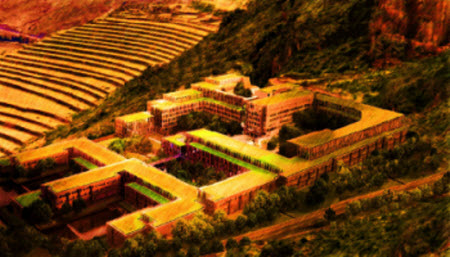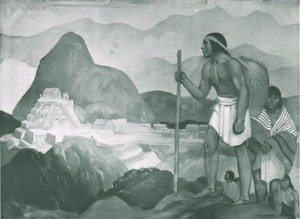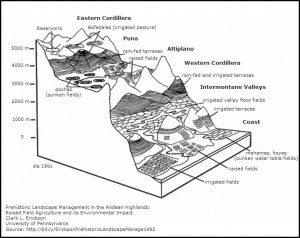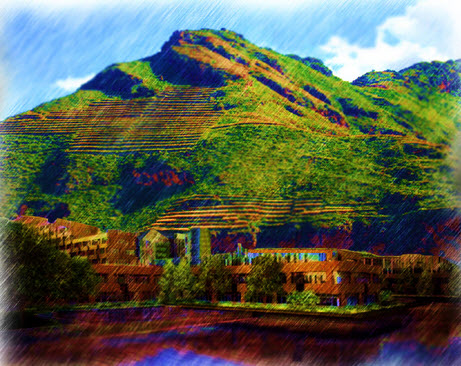By Rick Vecchio ✐
Peruvian Times Contributing Editor ☄
As part of the process of human evolution and, moreover, human survival, modern cities are due for a transformation. “They’re going to look more like ancient Machu Picchu than the gleaming towers of glass and steel we have today.”

That’s the tantalizing theory posited by Annalee Newitz, a renowned science journalist and editor-in-chief of the io9 futurist blog, in a post promoting her new book, Scatter, Adapt and Remember: How Humans Will Survive a Mass Extinction.
She explains that in order to confront the disasters associated with everything from climate change to meteor strikes and bombardment by cosmic radiation, “cities will evolve along with humanity, and humanity for its part will make cities more like living organisms.”
 In many cases, she writes, future cities will likely resemble ancient urban settlements like Machu Picchu in another way. “They’ll be ringed by farms.”
In many cases, she writes, future cities will likely resemble ancient urban settlements like Machu Picchu in another way. “They’ll be ringed by farms.”
Newitz further speculates that future cities might be built largely under ground and beneath the water, or inside single mega-structures. These would serve not only to conserve space, but also to offer layers of protection against extreme weather conditions, as well as major disasters — from earthquakes to meteor strikes and bombardment by cosmic radiation.
Building materials, too, could change from wood, concrete, brick and mortar to self-sustaining bio-engineered materials, fed by energy from sunlight.
Futuristic technological visions are easily written off as utopian fantasy.
But even ardent climate change deniers are starting to realize that the earth is experiencing an abrupt transition. And on that score, Peru has some important things to share.
Peruvians, ancient and modern, have always lived on a knife’s edge of seismic and climatic disaster.
Over thousands of years, when the warm Equatorial Current descended toward the northern coast of Peru, displacing the cold Humboldt Current, El Niño events would bring torrential rains and flooding to the desert coast and drought to the Andean highlands.
Every 500 to 1,000 years would come “Mega Niños,” and with them decades-long cycles of massive floods, mudslides and drought. These events are believed to have led to the decline of several ancient Peruvian cultures, including the Moche, Nazca, Tiahuanuco, Huari and Chavin civilizations.

But ancient Peruvians also showed remarkable resilience. That’s because their cultures were based on respect and harmony with their environment. This led to achievements that tourists and advanced engineers alike marvel at today. The remnants of megalithic structures and architecture are the most obvious accomplishments.
There are also the remnants of hydraulic infrastructure and relic agricultural field systems, such as “andenes” or terraces, raised fields, and irrigation canals, everywhere. Retaining walls and internal irrigation systems created micro-climates through the capture of solar radiation, fending off frost and preventing soil erosion.
Some archaeologists argue that these agricultural technologies need not only be excavated for study, but also rehabilitated and developed for modern use.
One such scientist is British archaeologist Ann Kendall, who, for more than 40 years, has worked to understand and revive the ancient system of terrace farming in the Southern Andes of Peru.
Since the late 1990s, and based on the findings of her multi-disciplinary excavations in Cusco, Kendall and her locally-directed Cusichaca association have teamed with communities in eight districts of the departments of Ayacucho and Apurimac, among the poorest areas in the country, to restore the ancient Huari and Inca terraces.
“The regions are interested in the terraces now,” Kendall told the Peruvian Times, “because they recognize that they are the answer to some facets of climate change, and that they are sustainable in the face of climate change.”

The terraces — with their internal capacity to both drain water and retain it — are ideal in any extreme climate,” Kendall said.
Research by Kendall and other archaeologists, such as Clark L. Erickson, has demonstrated that traditional systems like andenes terracing and raised agricultural field platforms can be nutrient-rich, water-efficient and productive methods of organic farming.
Peru has between 500,000 and 1 million hectares of terraces that the Inca maintained to feed an empire of more than 10 million subjects. Yet today, 50 to 75 percent of those massive terraces lining the steep slopes of the Andes lie abandoned.
From the point of view of modern market-driven technologies, these ancient agricultural techniques are considered inadequate and unworthy of serious consideration, compared to energy- and capital-intensive mechanized farming.
Never mind that various Andean products — among them varieties of potatoes, and organic super foods, like maca, kiwicha and quinoa, etc. — can only be produced in the high Andean ecosystems, where big industrial Agro, by its nature, can’t get a foothold.
Peru’s glaciers continue to melt at an accelerated pace. Its cold, nutrient-rich Pacific coast waters are heating up, and even the Amazon basin has been hit by severe droughts in recent years.
A little more “applied archaeology” and futuristic technological vision to revive and improve on the ancient agricultural methods might not be such a bad idea.





